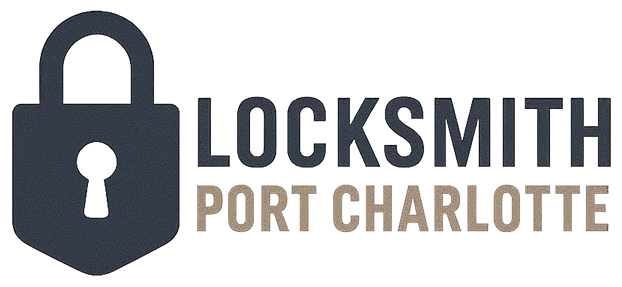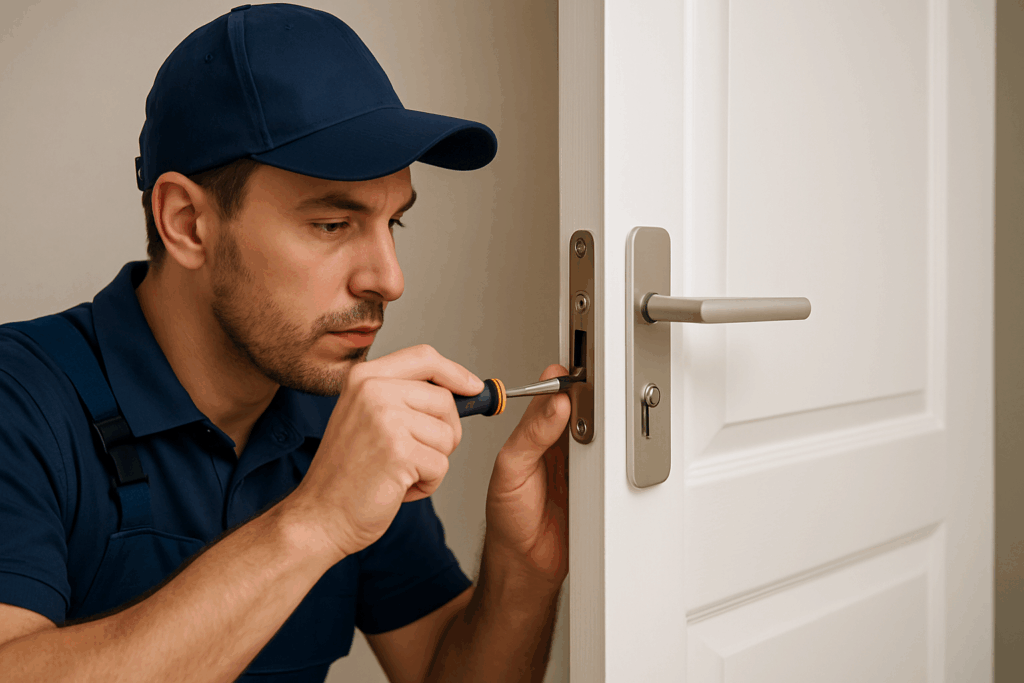How to Prepare for a Home Lockout Situation
Getting locked out doesn’t have to be a crisis. With a few smart habits, a well-stocked access kit, and a clear plan for who to call and what to do, you can turn an annoying setback into a quick, low-stress detour. This guide walks you through practical steps to prevent lockouts, minimize downtime when they happen, and avoid the common mistakes that turn a simple mishap into a costly repair.
Why Preparation Beats Desperation
Most lockouts happen at the worst possible moment—school runs, dog walks, trash night, or that mad dash to catch a ride-share. Adrenaline and urgency push people into prying, drilling, or forcing doors, which often leads to broken latches, split jambs, or damaged weatherstripping. Preparing in advance gives you options that are faster, safer, and cheaper. A good plan limits stress, preserves your hardware, and gets you back inside without leaving traces that weaken security later.
Effective preparation doesn’t require complicated gadgets. It’s about three layers: prevention (habits and hardware), access (spares and codes you can count on), and response (who to call and what to verify). If one layer falters, the others keep you moving.
Simple Routines that Prevent Lockouts
The best lockout is the one you never experience. These micro-habits reduce risk without adding friction to your day.
Keys-Wallet-Phone Check
Make a last-touch checklist before you close any exterior door. Say it out loud for a week—your brain will automate the routine. For kids, use a visual hook by the exit: a small tray or hook labeled with icons.
Designate a “Launch Pad”
Keep keys in one consistent spot near the door, elevated and away from windows. Add a small bowl for fobs and a hook for lanyards—clutter kills consistency.
Maintenance = Reliability
Dry-film or graphite lube on keyways twice a year, hinge screw tightening, and strike-plate alignment prevent sticky locks that tempt you to leave doors unlatched “just for a minute.”
Battery Calendar for Smart Locks
Replace batteries on a schedule (e.g., every 6 months or at 30% warning). Store a backup set near the door but inside a small coded box so guests can’t access them.
Choose the Right Backup Entry Methods
Backups should be easy for you, hard for strangers. Mix one physical option with one digital option for resilience.
Smart Deadbolt with Guest Codes
Code access eliminates the need for a hidden key. Create a dedicated “lockout” code you can share temporarily with a neighbor. Enable audit logs and set codes to expire automatically.
Realtor-Style Lockbox (Shrouded)
Mount a weather-rated combo lockbox on a solid anchor (masonry or a concealed eye bolt). Avoid doorknob-mounted boxes on glass-adjacent doors. Rotate the code after each use.
Trusted Neighbor Network
Give one neighbor a physical key and a second neighbor the lockbox code—or vice versa—so no single person has full access alone. Trade favors to keep it reciprocal.
Garage as Controlled Entry
If your garage has keypad access and an interior deadbolt, ensure the interior door is keyed the same as your front door (or has a backup code) to prevent a secondary lockout.
Assemble a Compact “Access Kit” for Your Bag or Car
Keep a small kit for emergencies. It won’t pick high-security locks—but it will keep you safe, comfortable, and prepared while help is on the way.
Smart Lock Batteries
A fresh set that matches your model, plus a tiny screwdriver for battery compartments. Store in a zip bag to avoid corrosion.
Local Locksmith Contacts
Save two reputable locksmith numbers in your phone and on a card inside your kit. Note service hours and any membership perks (roadside programs sometimes cover lockouts).
Comfort & Safety
Compact umbrella, thin gloves, flashlight or headlamp, and a reflective band if you’ll be outside at night. Stay visible and comfortable while you wait.
Proof of Residence
A photo of a bill or your ID with the address (keep it secure). Many pros require verification before unlocking for your protection.
Plans for Kids, Seniors, Pets, and Roommates
Customize your lockout plan to your household so it works under real-world pressure.
Kids & Teens
Teach them one safe waiting spot (porch neighbor, building lobby, or a specific store). Give a unique access code that can be revoked. Avoid hiding keys outdoors where peers might find them.
Seniors
Install a keypad lock with large backlit numbers and an ADA-friendly lever. Keep a shrouded lockbox for EMS access if needed; coordinate with family and caregivers.
Pets
If a pet is alone inside, prioritize temperature and water. Leave a neighbor with access and instructions. Smart cameras near pet zones provide quick welfare checks.
Roommates & Short-Term Rentals
Use time-bound codes for each occupant. Document who holds physical keys and rekey between long-term tenant changes. Avoid code sharing; use the app to grant new codes instantly.
Step-by-Step Actions When You’re Locked Out
Use this sequence to get back inside quickly without making things worse.
1) Check All Doors & Windows Safely
Walk the perimeter. A side door or garage service door may be accessible. Avoid climbing—falls are more expensive than locksmiths.
2) Verify Power & Batteries
If you use a smart lock, replace batteries and try again. Many models have a 9V or USB power port for temporary power—consult your manual.
3) Use Your Lockbox or Neighbor Plan
Retrieve the spare key or trigger your designated guest code. Rotate codes afterwards to maintain security.
4) Call a Professional
If non-destructive options fail, call a licensed locksmith. Ask for upfront pricing and request non-destructive entry methods first (picking, bypass).
Common Mistakes to Skip
These “quick fixes” usually lead to broken hardware, injured hands, or costly door/frame repairs.
DIY Prying & Drilling
Prying spreads the jamb and weakens your strike. Drilling can destroy cylinders and void warranties. Professionals can often pick or bypass cleanly.
Weak Magnetic Hide-a-Keys
Under-car boxes and flimsy magnets get lost or discovered. Use a shrouded lockbox or restricted key instead of obvious outdoor hides.
Climbing or Breaking Windows
Injuries and alarms are common. Glazing shards travel farther than you think, and repairs often exceed a professional unlock.
Broadcasting You’re Locked Out
Loud phone calls on the sidewalk, social posts, or asking random passersby for tools advertises vulnerability. Keep details private.
Hardware Choices that Reduce Lockout Risk
Choose components that fail gracefully and give you multiple ways in without sacrificing security.
Keypad + Physical Key Override
A keypad gives you code access; a keyed override covers battery or electronics failure. Keep the override key off-site in a coded lockbox.
Lever Handles over Knobs
Easier operation for all ages and abilities, especially when hands are full or dexterity is limited. Pair with a high-quality deadbolt.
Door & Strike Alignment
Seasonal swelling causes hard-turn keys and failed latching. Adjust hinges, use 3-inch screws into framing, and align the strike to keep throws smooth.
Weather-Aware Finishes
Coastal humidity accelerates corrosion. Choose hardware with corrosion-resistant finishes and gaskets to prevent moisture ingress that seizes cylinders.
Apartments, HOAs, and Verification Policies
In multi-unit buildings and HOA communities, rules can restrict exterior lockboxes, camera placement, or door hardware changes. Always check your lease and community guidelines before installing devices. Property managers often offer key-holding services or supervised access—use them to avoid violations. During a professional unlock, be prepared to show ID and proof of residency; this protects you and your neighbors from unauthorized entry.
After You’re Back Inside: Quick Audit
A lockout is a useful stress test. Spend five minutes to strengthen the weak links that surfaced.
Rotate Codes / Retire Spares
If you shared a code or key, rotate it. Update your neighbor network and note the date in your phone.
Lubricate & Align
If the lock felt rough, lubricate the keyway, tighten hinge screws, and confirm the bolt throws cleanly. Rough turns lead to future lockouts.
Update Your Plan
Add missing items to your kit, save a new contact, or move the lockbox to a better anchor. Preparation evolves.
Secure Evidence
If a window or auxiliary door was used, resecure it properly and check for wear or damage that could weaken security.
Common Lockout Beliefs—Busted
Don’t let bad advice ruin good doors. Here are quick truths to keep you on the right path.
“A credit card will open any door.”
“Drilling is faster than calling a pro.”
“Leaving a window cracked is a good fallback.”
“Smart locks always fail.”
Two Quick Checklists to Save on Your Phone
Copy these into your notes app so your future self can thank you.
- Prevention Keys-Wallet-Phone routine • Launch pad tray & hook • Lube locks (spring/fall) • Replace smart-lock batteries semiannually • Confirm strike alignment.
- Access & Response Shrouded lockbox installed • Neighbor + code plan set • Two locksmith numbers saved • Access kit stocked • Proof of residence handy.
Answers to Common Lockout Prep Questions
Quick guidance for the most frequent what-ifs.
Should I give a key to a neighbor or use a lockbox?
What if I rent and can’t install a lockbox?
How do I choose a locksmith?
Can I rekey to reduce spare keys?
Ready to Lock Out Lockouts?
Set up a shrouded lockbox, configure smart-lock codes, and tune your door alignment in one quick visit. Get a personalized plan with a neighbor network template and maintenance schedule so you’re never stuck on the porch again.

